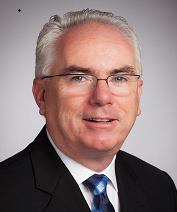On January 4, 2010, Ardent Partners launched CPO Rising as a new resource to procurement leaders around the world. The site tagline then (and now) was (and is) straight and to the point – “The Site for Chief Procurement Officers and Supply Management Leaders.”
Over the years, the firm, this site, and our community have grown exponentially. And, as we’ve grown, we’ve expanded our discussion, sometimes going beyond the topics that are core to the CPO and their procurement leadership teams. In 2022, we’re changing that and heading back to our roots with a renewed focus on the topics that matter to CPOs. There will be fewer articles, but if you are a CPO or aspire to the role, CPO Rising will remain your destination of choice as we cover the themes that matter in procurement in 2022.
Hand in hand with this announcement is the launch of a new series – “Procurement Experts on CPO Rising” that will aligns perfectly with this announcement.
Today’s article features an excerpt from my May 2021 episode of the Procurement Rising Podcast – Chris Shanahan, Thermo Fisher Scientific (click to listen to the full interview). Note that this excerpt has been edited for readability.
Talking Technology Deployment with CPO, Chris Shanahan

Andrew Bartolini: I was thinking back to when we had lunch a few weeks before the shutdown (mid-March 2020), and you were telling me about your upcoming P2P deployment plan. A plan that was impacted significantly by COVID-19, but a plan that went forward nonetheless. I think it would be great if you could share your story of how you and your team launched a full P2P program during a pandemic with a distributed workforce.
Chris Shanahan: Yes, let’s start, however, in terms of thinking about Thermo Fisher, clearly it is a company that’s growing. We have 22 divisions and 5 segments today. When we think about procurement and it comes to process and end-to-end service, what we’re really trying to bring together and get to a standard process for procure-to-pay across the company. We have multiple ERP systems within the company. In fact, we have more than 170 instances when we actually went through it and counted them all. So we made a decision just before I joined the company (a few years ago) to actually deploy new P2P technology. We started in the US, and we started deployment late in 2019. Our first deployment, which was a proof of concept was in late 2019. So we started there, but we expanded it in 2020, right in the middle of COVID. So it’s one of these things where we have deployed it now to 34 sites across our network in the US.
It had to be done last year, and it was all done virtually in the sense of proof of concepts. And pulling together teams, virtually working through how we actually would set it up within the multiple sites that we deploy to across the network. It’s sort of one of these situations when I reflect back, when you deploy systems, everybody would say, “you need to get into a room… you need to spend 2-4 days working through what the current base is, where we’re going, and what the changes are to the base.” And to be fair to the teams in here, it’s a pretty broad, cross-functional team, all done virtually. When I think about the US, for us, we’ve got coverage now for our spend – about 85% of our spend has coverage in the US for indirect. Also all our payments for indirect are actually going through that technology platform as well. We’ve got over about 3,000 requesters in place that are up and running, in terms of using this today.
We have some interesting data as well. 59% of our transactions are actually through catalogs, which is pretty good. When you think about the use of catalogs, we’ve got 68 catalogs live right now, across our network. And there are some other interesting data points. So when we loaded the actual supply base in here on the sites that we are using, we loaded over 16,000 suppliers. Which sounds like a lot, but we’ve only had transactions against a third of those. So, there is still a big opportunity for us to consolidate spend. If we don’t see supplier usage, we’re going to shut the suppliers off. So it’s a way of continuing to consolidate and drive some efficiency on the back end as we work through the process.
AB: So this project has a massive scope. When you compare this deployment to other technology projects in the past, how did this one compare?
CS: Well the use of technology has been very important. We’re all used to video now or used to turning on the video. If we think pre-Covid, the technology was always there, but it wasn’t really embraced, so the use of technology was really powerful. We also have to be a bit flexible on timing, you couldn’t run a 9-5 workshop, you have to run segments of workshops. Usually 10 to 1 or 10 to 2 with breaks, et cetera. So, COVID really changed the way we flexed staff and managed the deployment and got feedback from the user community. The other thing here is the team had to work longer hours as well. It’s amazing…we’re working virtually, and you think it would be easier in some ways, but when you’re 8-5 in an office, when you have to go to an office, there are less meetings. So the team put in a lot more hours to achieve this deployment. Was it a perfect deployment? I’m going to say no.
AB: Has there ever been one?
CS: No, you see, this is the whole thing, there never has been one, but when you’re not in-person, you lose some of the actual nuances in terms of process, but nothing major. I think the biggest sort of miss for us is that we didn’t add all the suppliers on day one. And, we picked it up and “hyper-cared” and we sort of adjusted it. Even though we don’t get full usage about of suppliers in terms of what we have loaded. There were still a couple of misses in there that we know that we had to catch up on that part of it. You do get through the more in-person versus virtual, right? So, there’s a piece of that in there. I think the other thing we did do here, which made this even more complex, was we stood up a new shared service center in Costa Rica today, and that’s where our accounts payable team was pre-Covid.
But we didn’t have a transactional team for the Rec-to-PO conversions, so we had to set that up virtually. That’s actually gone pretty well, to be fair. And the team down there is doing a really good job, but it was just bringing new people in, trying to train them. The whole knowledge capture piece, it is never clean. But, the thing here about going to a new process, there was less knowledge capture needed in the sites, so it was more about, “here’s our new process” and more about educating the sites on how we run the process as we went forward to live execution.
AB: So with the shared service center in Costa Rica, were you hiring new staff or simply training the current staff?
CS: We actually hired as well, we actually hired new staff.
AB: And how did you find hiring over Zoom and over video?
CS: It actually ended up really well. We did a pretty good job. Social media was about attracting talent and understanding who Thermo Fisher was. It also helped that we were in the news a wee bit last year, with testing, so we were one of the companies that helped scale-up global testing for PCR and we were early to the table. So, name recognition did come into play (it helped). Pre-Covid I’d say that name recognition for Thermo Fisher was less. Our experiences last year around our name recognition for Thermo Fisher in terms of attracting talent, helped us in some ways. So we were able to attract talent and we’ve got some pretty good talent down there in the center, both in the shared service center doing the transactional work. And we’ve also got a Center of Excellence, which is really looking at more of the sourcing and the bidding activity as well. So there’s a pretty good, strong team built up down there at this stage.
AB: That’s great to hear. Is the team working on site, or are they also distributed?
CS: They’re all distributed. That’s the way of the world. I think it’s going to be later this year or early next year before we get everybody back together in some kind of format, but yeah, it was and is distributed.
AB: Did you do hiring this past year as part of your normal team? Were there any changes as a result of the process, and maybe where you were looking for people?
CS: No, not really. I think we’re constantly hiring, and as a company, we’re scaling fairly rapidly at the moment across multiple product platforms, so we are hiring. When we look at hiring, there are certain roles that we want close to locations and there’s other roles that we’re just making them virtual, so it’s a mix as we think through the type of roles that we’re hiring.
AB: So Chris, new responsibilities in the shared service center in Costa Rica and new tech deployment. So when you look at that, was there anything that you did differently because of the pandemic that is now a lesson learned that you will take forward?
CS: I think the idea, and this applies for multiple things, the mix of in-person versus virtual, I think we’ll see more virtual activity going on as a sort of standard going forward. I think there’s always a need to bring people together. I do think there is a need to do that, but not to the level that we used to do, I think we’ve got used to doing things virtually. And we’ve got used to sharing and getting decisions done pretty quickly. So I think that will be a practice going forward, that there’ll be a blend when it comes to these types of programs.
To hear the full conversation, click here – Procurement Rising Podcast – Chris Shanahan, Thermo Fisher Scientific

